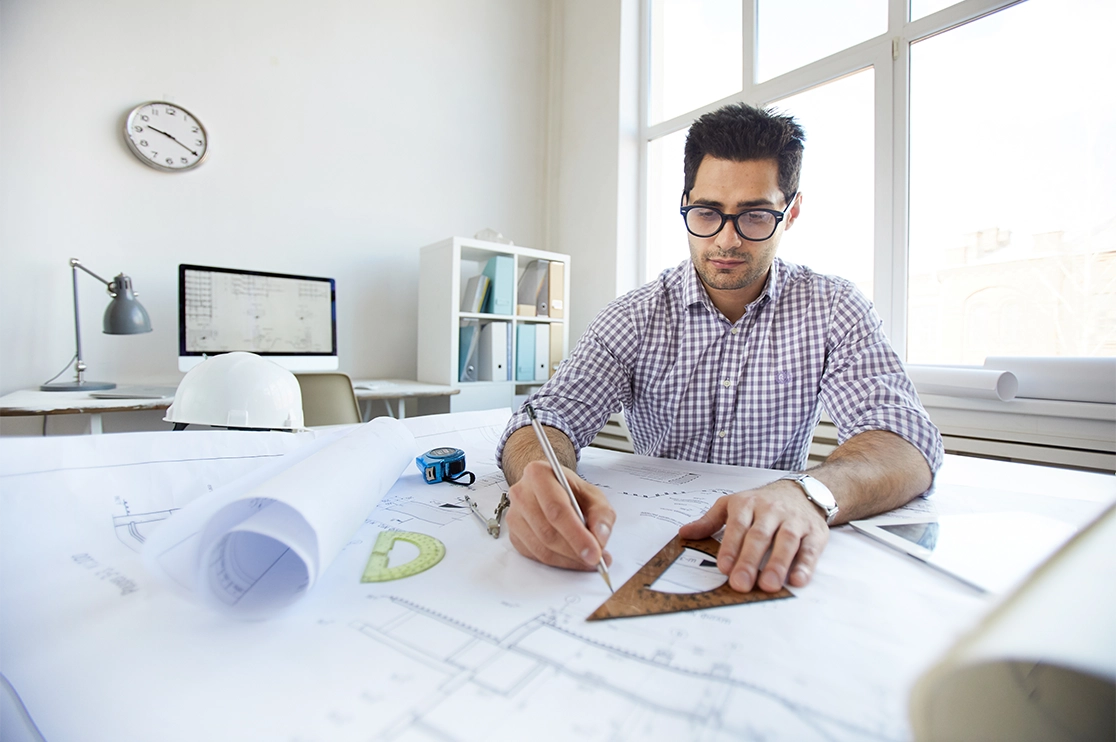Understanding the Diverse Career Paths Available for Aspiring Architect
As a hopeful Architect, you have a world of job paths waiting for you. Whether you're attracted to typical style or the nuances of sustainable style, there's a particular niche that lines up with your passions.
Typical Architecture: Designing Structures and Frameworks
Conventional architecture concentrates on making structures and structures that mix performance with aesthetic allure. As you explore this area, you'll value the detailed equilibrium between type and function. You'll discover to attract inspiration from historical styles, integrating aspects like proportion, products, and workmanship. Your styles can reflect cultural heritage, showcasing neighborhood practices while fulfilling contemporary demands.
You'll establish abilities in drafting, model-making, and site analysis, allowing you to envision and connect your ideas properly. Involving with clients, you'll require to comprehend their vision and convert it right into feasible designs.
Moreover, developing codes and sustainability methods are necessary in your work, ensuring your structures are safe and eco friendly. As you grow in your career, you'll discover chances in household, commercial, or perhaps remediation tasks, each offering special challenges. Accepting typical design paves the way for a fulfilling occupation that pays homage to the past while shaping the future.
Urban Preparation: Shaping Neighborhoods and Public Spaces
As an aspiring Architect, you can play a vital duty as a city planner, transforming exactly how communities communicate and function. By using area engagement techniques, you'll guarantee that citizens have a voice fit their setting. And also, incorporating lasting layout principles will help create rooms that not only fulfill today's demands yet also protect the future.
Role of Urban Planners
While several may believe of engineers as the single enthusiasts behind structures, metropolitan coordinators play a vital duty in shaping the more comprehensive landscape of communities and public spaces. By working together with various stakeholders, you'll help design parks, transportation systems, and household areas that advertise social communication and availability. Your knowledge in spatial style and neighborhood characteristics permits you to imagine future development while maintaining cultural heritage.
Neighborhood Interaction Strategies
Effective community engagement approaches are essential for metropolitan coordinators to ensure that the voices of locals are heard and valued in the preparation process. To promote significant discussion, you need to prioritize open online forums and workshops where area participants can share their concepts and concerns. Use surveys and social media to get to a wider target market, ensuring diverse perspectives are included. Collaborating with regional companies can improve trust and help with deeper links. It is essential to provide clear information about decision-making procedures and proposed jobs, enabling locals to really feel enlightened and encouraged. By actively incorporating and listening responses, you'll create rooms that reflect the community's needs, inevitably resulting in even more effective and sustainable metropolitan environments. Embrace openness and continuous dialogue for lasting impact.
Sustainable Layout Concepts
When developing urban spaces, including lasting style principles is vital for creating atmospheres that prosper both ecologically and socially. Think about incorporating green areas, like parks and gardens, to enhance biodiversity and improve air top quality.
Creating with water preservation in mind is also crucial-- assume about rain gardens and permeable surfaces to take care of stormwater. Entailing area members during the planning process guarantees that the rooms you produce satisfy their requirements and encourage social communication. By accepting these principles, you'll add to vivid, lasting urban landscapes that profit everyone.

Landscape Style: Producing Sustainable Exterior Atmospheres
As you discover landscape architecture, you'll uncover crucial design concepts that create beautiful and useful outside rooms. Lasting practices play a vital role in ensuring these settings grow while decreasing environmental effect. And also, you'll find a selection of profession possibilities that enable you to make an actual difference in exactly how individuals connect with nature.
Design Principles in Landscape
Understanding design principles in landscape design is necessary for developing lasting exterior settings that harmonize with nature. You'll need to consider components like scale, proportion, and equilibrium to ensure your layouts feel natural and welcoming. Furthermore, pay focus to seasonal adjustments, developing with materials that match the surroundings year-round.
Lasting Practices Overview
Sustainable methods in landscape style not just concentrate on visual appeals however likewise prioritize eco-friendly health and source preservation. By incorporating native plants, you boost biodiversity and reduce the need for chemical fertilizers and chemicals. Implementing efficient watering systems assists conserve water and minimizes runoff, safeguarding close-by environments. You can develop areas that promote dirt wellness, such as utilizing natural materials and practicing permaculture concepts. Furthermore, including green framework, like rain yards and permeable sidewalks, aids in stormwater management and decreases urban heat. When you develop outdoor environments with sustainability in mind, you add to a much healthier planet and supply spaces that promote area connection. Inevitably, these techniques ensure your styles profit both people and the setting for many years to find.
Profession Opportunities Expedition
With a solid foundation in sustainable techniques, landscape architecture supplies a variety of job paths that enable view publisher site you to make a purposeful influence on the setting. Urban organizers commonly collaborate with landscape designers to create environment-friendly spaces in urban setups, improving city livability. If you're passionate concerning education, take into consideration coming to be a landscape style educator, inspiring future generations.
Lasting Style: Focusing on Eco-Friendly Practices
As you discover your career in design, accepting green techniques can set you apart in an affordable area. Sustainable design concentrates on developing buildings that decrease ecological influence while improving resident wellness. By including sustainable products, energy-efficient systems, and sustainable structure techniques, you'll add to a greener future.
Start by getting understanding of eco-friendly certifications like LEED or BREEAM, which can boost your credentials. Think about just how natural light, ventilation, and thermal effectiveness can enhance style. Work together with engineers and environmental consultants to innovate options that lower waste and preserve resources.
Do not neglect the value of area involvement-- engaging regional stakeholders can inspire designs that integrate with the setting. As clients increasingly prioritize sustainability, your expertise in environment-friendly practices will not just attract tasks but additionally satisfy your enthusiasm for responsible design. Embrace this vital facet of the profession, and see your job grow.
Historical Conservation: Securing and Recovering Cultural Heritage
While you commence on your architectural trip, think about the vital role of historical preservation in maintaining our social heritage. This field concentrates on the protection and reconstruction of significant structures, websites, and frameworks that tell the tales of our past. By participating in historic conservation, you'll assist protect the architectural heritage that shapes neighborhood identity.
As a historical conservation Architect, you'll analyze historic relevance and evaluate the condition of frameworks. You'll work closely with historians and conservationists to ensure genuine reconstruction methods are employed. This occupation course allows you to blend creative thinking with study, enabling you to create options that respect initial products and workmanship.
Your job not only adds to sustainability by recycling existing buildings but likewise fosters a sense of pride within neighborhoods. Welcoming this course will certainly assist you become a guardian of history, protecting the stories and visual appeals that improve our lives.
Interior Style: Enhancing Indoor Spaces
Historical preservation and indoor style both share a commitment to improving the developed environment, but they focus on various facets. While historical preservation highlights keeping a structure's historic and cultural value, interior architecture zeroes in on enhancing indoor rooms for functionality and visual appeals.
As an ambitious Architect, you'll find that interior style permits you to mix creativity with technical abilities. You'll make spaces that not only look good however additionally advertise comfort and efficiency. This area involves recognizing exactly how light, color, and materials connect within a space, affecting mood and usability.
You'll deal with different projects, from household homes to industrial workplaces, making sure that each atmosphere fulfills the demands of its occupants. By prioritizing individual experience, you can transform insides right into useful and inspiring areas, making a significant read this article effect on how people engage with their environments. Welcome the chance to enhance interior environments and shape the method individuals work and live.
Industrial Design: Merging Performance With Looks
Commercial design plays a necessary duty in creating items that seamlessly blend looks with capability, ensuring that what you make use of everyday is not just visually appealing but additionally useful. As a hopeful Architect, you can engage on your own in this field, concentrating on developing whatever from furniture to customer electronics. Your job includes comprehending user requirements, products, and manufacturing processes, permitting you to develop innovative remedies that boost everyday experiences.
In industrial design, you'll frequently work together with makers, engineers, and marketing professionals, making certain that your designs are not just beautiful however additionally feasible. This occupation path uses a vibrant setting where creativity satisfies functionality, making it a satisfying selection for architects interested in forming the items of tomorrow.
Regularly Asked Inquiries
What Educational Certifications Do I Required to End Up Being a Designer?
To end up being an architect, you'll need a professional level in design, usually a Bachelor's or Master's. Additionally, you'll have to finish an internship and pass the Architect Registration Assessment to exercise legitimately.
Exist Certification Requirements for Various Building Job Paths?
Yes, see this there're accreditation requirements for various architectural courses. Architect. You'll require to pass examinations, complete teaching fellowships, and often pursue specialized training, depending upon your picked focus, like landscape design, metropolitan layout, or historic conservation
What Software Abilities Are Necessary for Architects Today?

Exactly How Can I Gain Practical Experience While Examining Design?
You can acquire useful experience by interning at architectural firms, taking part in layout competitors, volunteering for community projects, or teaming up with schoolmates on real-world tasks. These chances enhance your skills and construct useful connections in the industry.
What Work Opportunities Exist Outdoors Conventional Architecture Firms?
You can discover different job possibilities outside standard architecture companies, like metropolitan planning, indoor design, landscape style, building and construction administration, realty growth, and even roles in sustainability consulting. Each deals one-of-a-kind obstacles and benefits.
Whether you're attracted to conventional style or the nuances of lasting style, there's a niche that lines up with your interests.When creating urban rooms, incorporating lasting design principles is crucial for developing environments that prosper both ecologically and socially.As you check out landscape architecture, you'll find essential style concepts that produce practical and gorgeous exterior areas.Understanding style principles in landscape design is important for producing lasting exterior environments that balance with nature.In industrial style, you'll often work together with online marketers, engineers, and suppliers, ensuring that your designs are not just beautiful but also feasible.